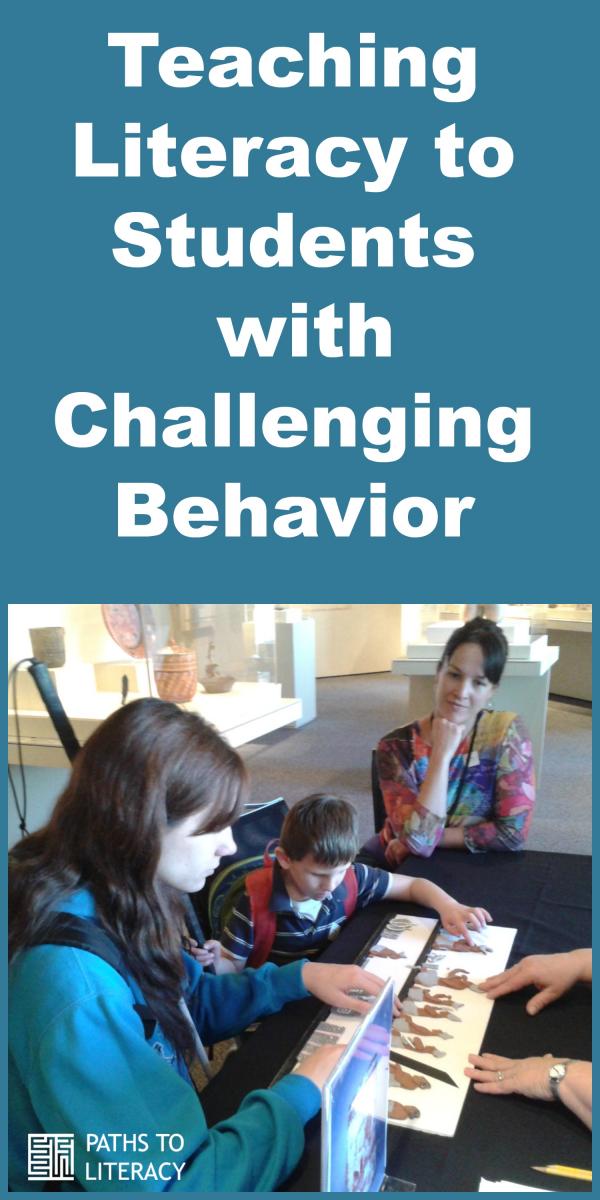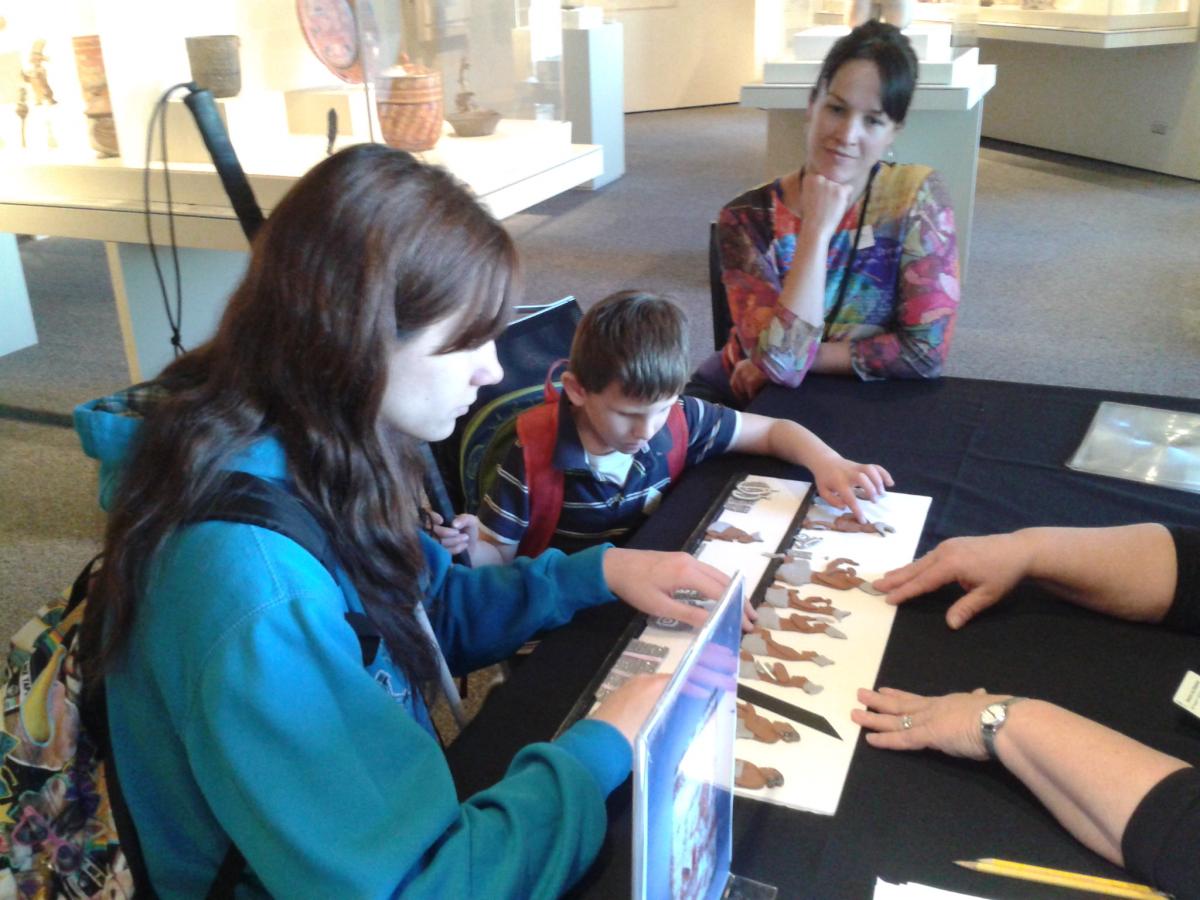Teaching Literacy to Students with Challenging Behavior
 When I first started working as a TVI, I was under the impression that my students would want to work with me -- just like I wanted to work for my teachers when I was growing up. The first braille learner student I worked with was a dual-media student who clearly preferred grinding her teeth over touching the braille I prepared for her. I lost many nights of sleep pondering how to provide literacy instruction to her. Now, many years later, I have developed a degree of confidence with providing instruction to these students. Here are some things that I have learned over the years…
When I first started working as a TVI, I was under the impression that my students would want to work with me -- just like I wanted to work for my teachers when I was growing up. The first braille learner student I worked with was a dual-media student who clearly preferred grinding her teeth over touching the braille I prepared for her. I lost many nights of sleep pondering how to provide literacy instruction to her. Now, many years later, I have developed a degree of confidence with providing instruction to these students. Here are some things that I have learned over the years…
Schools and Behavior Plans
For those who are new to the language of behavior intervention strategies, I think it is valuable to share the basic steps of a functional behavior assessment (FBA) and behavior intervention plan here (BIP). I appreciate Matthew McNiff’s simplified description of the 5 steps of a FBA/BIP:
- Identify the problem.
- Collect information on behavior and analyze. (There are many inventories/tracking sheets available for this.)
- Develop a hypothesis about the behavior.
- Develop and implement a behavior intervention plan based on the hypotheses.
- Evaluate progress and follow up as necessary.
He also reminds people: “You can do a behavior plan on a napkin, it is only as good as the people who are implementing it” (McNiff, 2018).
Additional factors that influence how we approach and manage challenging behavior include:
- How we provide services in our schools (some of us are very itinerant, some have center based models, or work in specialized schools, some are dually certified as O&M instructors and may work with these students for large portions of the day.)
- The structure of our educational teams…do para-professionals work with our students? For what part of the day is additional support available?
- The culture of the building—what do people understand about blindness? What are their attitudes about the student’s visual impairment? Have they met anyone else with a visual impairment and understand that not all individuals who have a visual impairment also have challenging behavior?
Some schools have excellent supports and procedures in for assessing behavior, and developing and implementing plans to mitigate challenging behavior. If you haven’t had access to professional development around behavior plans, there are many resources online. Take a look at: pbisworld.com. This comprehensive website lists strategies, provides tracking forms, and delineates targeted approaches to a variety of challenging behavior. (Implementing behavior plans with fidelity and involving all team members is a topic for another post.)
Students and Strategies
Many of the students with challenging behavior won’t sit and focus for a tradition braille lesson. Rather, their literacy instruction needs to be woven throughout the course of the school day. The trick is getting everyone on board (teachers, specialists, family members, administrators), getting the support the student needs (by documenting and advocating) and, ultimately, trying to infuse literacy at every possible opportunity.
Many of these strategies have come from talking and collaborating with TVI and school team colleagues. Some of these ideas have come from trying and failing and trying again. Some are just creative ideas that came when we seized the day to take advantage of turning an ordinary activity into something with a literacy focus.
- Gather the student’s educational team and sit down with the student’s daily schedule. Identify the times of day where there are opportunities for preferred activities and literacy. Clarify the times of day the student will have close adult support, or be in a small or large group setting. Establish expectations and identify a point person for each section of the day. Establish a back up plan for when someone is absent. Develop a clear statement of explanation about the child’s visual and behavioral needs so that when there is a substitute, that person has immediate access to clear information about the child (and doesn’t take the team 2 steps backwards by enabling and reinforcing bad behavior). Develop a plan for communication with the family. You need to keep a daily log of progress. Would the family like daily or weekly communication? Determine if the family would like to use a cloud-based document, or a back and forth book to document the child’s progress on literacy (and other) goals?
- Discuss student preferences--does the student have a preferred person, or activity? Preference inventories can guide you toward the time, topic, and environment that will be most supportive for students with challenging behavior to develop literacy skills. Can you leverage these relationships and activities to provide bits of literacy throughout the student’s day? Perhaps a daily greeting in braille from the preferred person or menu of rewards in braille that the student can pick from after they finish a non-preferred activity?
- Take advantage of ECC activities to work in literacy goals. Sometimes, the simple act of a student “touching” a tactile representation or display is a huge first step in fostering tactile development. (In this photo, a child who was averse to reading braille exercised his tactile literacy on an outing to a tactile exhibit with a proficient braille reader = small victories count!)

- Literacy blocks in elementary schools can be long. Many of these students will become restless. Is there a job or two that they can do during longer periods of the day? Perhaps take a note to someone in the building/run attendance or help someone with organization? Old mail files are excellent tools to have a student place papers in some kind of order (provide alphabetized envelopes or papers to organize).
- Relationships matter! Sometimes, having a preferred adult request “help” with something that involves a bit of literacy (reading a sign, or organizing a desk) is enough to encourage the child to do the work.
- Sensory-based approaches This cannot be stressed enough. Many of these children have sensory integration problems. What types of sensory strategies work to improve the student’s self-regulation skills? Do they like to swing? If so, will they choose “swing” from a tactile menu of 3 choices? Can you build on this to make other words to end in “ing” to develop a “silly swing book”?
- Do they like music and singing? Many of my students will just sit at the braille-writer until I start singing the silly song I made up about “putting the paper in”. (Later we move to “singing it in our head” so that they can begin to use self-talk to help them regulate). Sing the alphabet and scribble. Think about your youngest students and what works for them. Many of these children respond well to pre-school songs and nursery rhymes. Sing any song, for as long as it takes, while they are pressing the keys to the cadence of the music
- The language master: These are hard to find. I recently did a quick search and it looks like there is a company in the UK that is still producing them. There may be some in storage units in your schools- find out! Braille a word or phrase on to the card and have the child record their voice reading the card. The children enjoy hearing themselves after they check their accuracy reading the card.
- Use small plastic chest of drawers to store a daily “surprise” of literacy activities. Maybe a set of flash cards for matching? Maybe a set of tactile dice that they roll and have to read or write that many words, letters, or tactile symbols?
- Racing on the braille writer: Bring in a second braille-writer and have a peer race the student in writing a line of symbols.
- Concierge bells: A quick ring at the end of a line tracked or a pair matched can be a fast and easy reinforcement
- Take advantage of the holiday. Can your student braille to/from cards at a local gift-wrapping event? Or, for peers? What about a bouquet of tactile flowers with poems written on them for a loved one? Spray a little perfume on the flowers to make it even more special!
- Cooking - Many of these students enjoy cooking. If they won’t read the recipe, will they read the numbers on cards with the order of the recipe? What happens if the order is messed up? Would the reluctant student be wiling to “read” questions and interview a panel of taste testers after the cooking?
- Making phone calls - The student can call and read a list of things to the office manager, or place a grocery or food order for someone in the building.
- Movement – The proprioceptive and vestibular systems provide sighted people with involuntary means for self-regulating. Our students may need more, specific types, of movement to help ground and center themselves. Work with your OTs to develop strategies specific to the individual child. Nothing “literacy” will happen until the child is in a “ready to learn” state of arousal.
- Bracket preferred and non-preferred activities. This may seem simple, but this is where you have to collaborate with the other team members to make sure that you aren’t placing too many demands on the child.
- Reader’s theater or acted theater – Take the child’s favorite story and turn it into a play. Act the parts out, invite other students to participate and memorize lines. Perform it for the class or a group of parents. Making the stories “come to life” can inspire interest for more stories and afford the children an opportunity to experience literacy through their bodies. (This is also an excellent way to incorporate switch technology and provide non-verbal students with meaningful participation!)
- Identify primary goals with the team. This is a strategy to keep you sane. I was blessed to once have a very supportive supervisor who taught me to narrow my goals and objectives. I wanted to work on EVERYTHIING with these students. It isn’t possible or reasonable to have too many goals to monitor. These students are working to develop many skills. Identify the top 2 or 3 areas of literacy and focus on a goal for these areas.
- Make a list of strategies that work. Keep it on a shared document for the whole team. Share it with school staff at meetings.
- Make sure the language of the IEP goals captures the specific behavioral need. How long will the student read and with what degree of accuracy or attention to the task? Do you want the student to initiate a literacy task? Do the student’s literacy goals align with both their present literacy and behavioral needs?
- Be gentle with yourself. Practice patience. Continue to question. Celebrate small victories. Share your ideas!
Reference:
Matthew McNiff. (Feb. 2018). Creating a behavior intervention plans that you can wow your friends with on Monday morning. Paper presented at the Midwest Symposium for Leadership in Behavior Disorders, Kansas City, KS.

